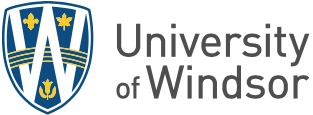 Political science students took on the roles of federal party leaders in a mock debate Monday: Luca Rubino for the Greens, Ali Hage for the New Democrats, Rhyse Parker for the Liberals, and Jacqueline Turner for the Conservatives.
Political science students took on the roles of federal party leaders in a mock debate Monday: Luca Rubino for the Greens, Ali Hage for the New Democrats, Rhyse Parker for the Liberals, and Jacqueline Turner for the Conservatives.
Political science students took on the roles of federal party leaders Monday, sparring in a simulated debate over issues like the cost of living, housing, health care, and environmental sustainability.
Students in professor Lydia Miljan’s class “Political Parties and Elections” have been working on election campaigns this semester, each taking on a role within their assigned party’s campaign team. Representing the four main parties, each group consists of a candidate, campaign manager, social media director, policy advisor, and other positions key to forming a solid campaign.
“Students did a compass survey and were put into groups of like-minded individuals. There were some defections and changes from the original groupings, but in the end, we have four political parties represented: Liberal, Conservative, NDP and Green,” Dr. Miljan explains.
All their work behind the scenes was brought into the spotlight as Liberal party candidate Rhyse Parker, Jacqueline Turner for the Conservatives, Ali Hage representing the New Democrats, and Luca Rubino of the Greens took the Armouries stage for the candidates' live debate.
Moderated by students from Maple Media, the debate required candidates to think on their feet, as they had no prior access to the questions. Each had about a minute to respond, followed by rebuttals. Those on the media team verified only objective facts and did not fact-check any “speculative” statements.
The candidates navigated with confidence and quick thinking, handling the debate like seasoned politicians. Staying true to their party’s principles, they drew on real-world challenges and political decisions to craft persuasive arguments while touting their ideas to address the issues.
When asked about health care and their plans for existing programs like Pharmacare and the Canadian Dental Care Plan, the Liberal party candidate addressed the health-care worker shortage.
“The Liberal party is prepared to implement practice-ready assessment programs to allow thousands of internationally trained medical professionals to work in health care and serve Canadians,” Parker said.
Noting the importance of social programs, the Conservative candidate addressed overspending and her party’s plan to make small cuts to Pharmacare.
“The purpose of this will be to put it towards our economy and real building, therefore creating a better situation for all Canadians. The housing crisis is real, and to make real change, we need to make small cuts, however, that will be a good return for Canadians,” Turner said.
NDP candidate Hage said the current programs in place have been “half measures” and his party would expand them.
“None have succeeded at covering a sufficient amount of Canadians; almost a third of all Canadians have been left out without any dental coverage at all. And as for Pharmacare, about a quarter of all Canadian households are still struggling to make enough to pay for their meds,” he said.
The Green party candidate also addressed the current Liberal government, citing undelivered promises.
“So far, this government has said they're going to implement all these changes to Pharmacare, dental care and child care. However, that has not been delivered. What the Greens want to do is expand on these policies. We want to implement child care for all provinces and make Pharmacare more affordable,” Rubino stated.
The debate was civil, with only a few jabs thrown between candidates as they critiqued party decisions. Parker reminded her fellow debaters, “I am not Justin Trudeau,” which was met with applause and some laughter from the audience.
Other questions surrounded topics like the housing crisis, international trade and relations, inter-party division, and climate policy.
“I was very happy to see how well the students performed in the debate. They had certainly taken my advice to heart,” Miljan says.
“All teams were instructed to have a campaign platform, do opposition research, and be able to tell their story to the voters. I could see a lot of those elements in the way in which the candidates performed in the debate. In addition, in the background, the teams were also sending out social media posts and planning the rest of the campaign.”
The debate was filmed and will be shared with high school students in two classes along with websites created by the media group. Those secondary students will then vote for who should be the next prime minister in this simulated election.
